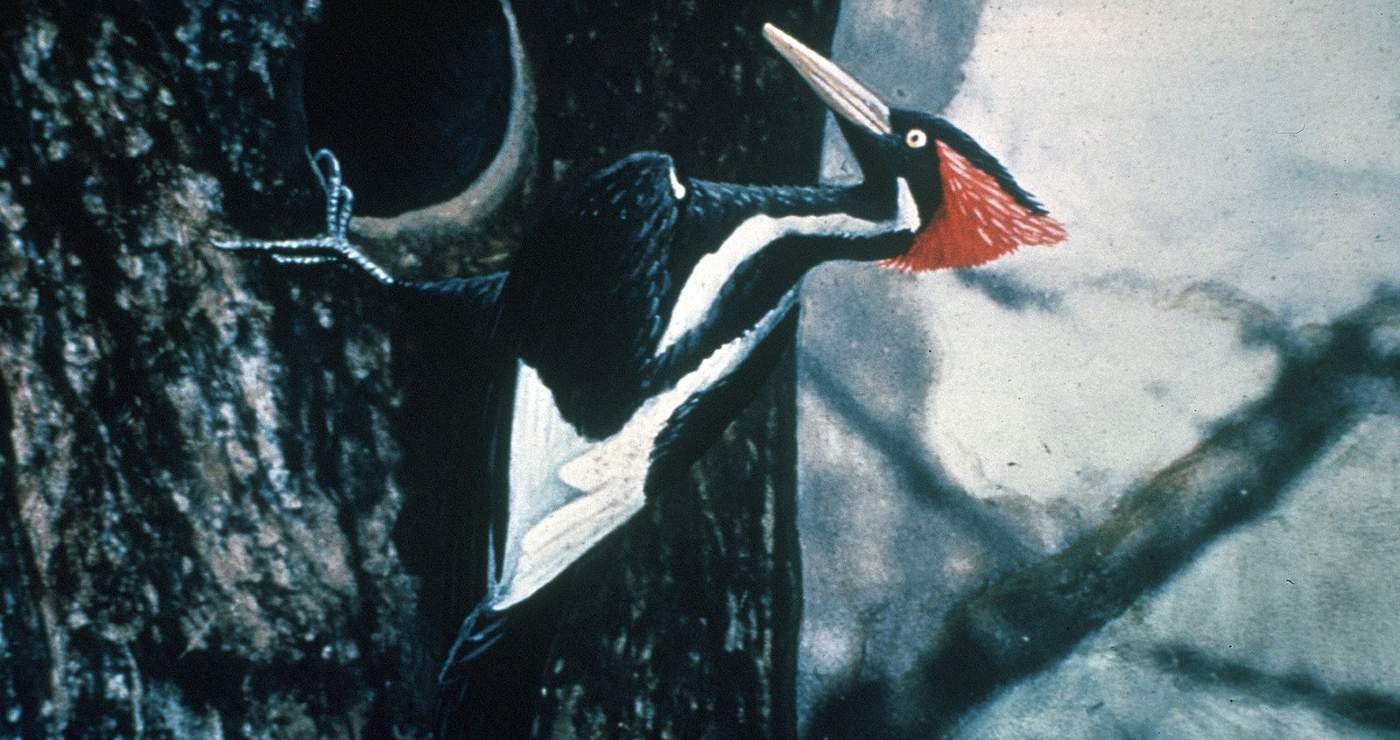
The largest woodpecker on the continent, the ivory-billed woodpecker was proposed to be extinct last year after more than 70 years without a sighting.
New findings, including trail and drone camera images, presented by conservationists at the National Aviary, aim to refute this claim and secure protection for lowland forests in Louisiana where the woodpecker would live.
Americans love their birds, and it seems premature to propose the species extinct, when since 1944 there have been 200 reported sightings, including from game wardens, ornithologists, and field biologists. Furthermore, observations have included both photographic and audio evidence, and even feathers.
For example, Tim Gallagher of the Cornell Lab of Ornithology and avid birder Bobby Harrison visited the Cache River National Wildlife Refuge in next-door Arkansas in 2005 after sightings of the bird were reported there.
Their team of volunteers spent 4,750 hours searching; they recorded a grainy video, five convincing images, and a characteristic audio recording that prompted the U.S. Dept. of Agriculture and the Nature Conservancy to both jump in with millions of dollars to preserve the surrounding area.
As far as birds go, woodpeckers are pretty easy to find and identify. In North America, most species of woodpecker are black, white, and red—while clinging to tree trunks rather than perching on branches mean they are almost never camouflaged, and in profile they are immediately noticeable, especially the ivory-billed which is the largest in the family on the continent.
Further still, the calls of woodpeckers are very loud, very different from song birds, and very easy to trace back to the source.
RELATED: A Gorgeous Bat Falcon Spotted for the First Time in the United States
With all these calling cards, it’s no surprise that a professional field survey conducted over ten years from 2012-2021 has a lot to say about whether the ivory-billed is extinct or not.
On a white saddle
Picking out prime ivory-billed habitat, the team of Steven Latta, Mark Michaels, and eight other members and collaborators from the National Aviary’s Project Principalis—named after the scientific name of the woodpecker—looked for dying trees or trees that had evidence of woodpecker activity based on local knowledge.
After finding one believed ivory-billed on a sweetgum tree in October of 2019, the team heavily surveyed it and any suitable nearby trees for the next two years. Using evidence from 6-19 camera traps, as well as a video-camera-armed drone hovering at around 400 feet above the treetops, the team put together a series of comparisons with other woodpeckers in a paper awaiting peer-review, which they believe conclusively demonstrates the ivory-billed’s continued survival.
For example, taken on the same tree, cameras reveal the size difference between visiting woodpeckers by imaging a pileated, red-headed, and a third woodpecker which was much bigger than both—a good sign, as the ivory-billed woodpecker is the largest in North America.
A reference photograph taken in 1939 reveals the characteristics of the bird: most notably the “white saddle” or patch of white-colored feathers in the small of its back.
MORE: Bird Scientists Need Some Help Finding Species – They’re Turning to Birdwatchers
Comparisons to the pileated woodpecker are key. Not only do they look very similar, but they are both large birds. In one sequence of trail cam photos, a family group of large woodpeckers was spotted foraging together. This is terrific evidence that these were ivory-billed woodpeckers, as not only do pileated woodpeckers forage quite differently, but they are also extremely territorial, and don’t forage alongside other males.
Further drone footage found large flying woodpeckers in the area with white saddles, and white on the hindwing quarters.
“As a group, we are confident in our results,” state the National Aviary. “We look forward to our data informing management and conservation of bottomland forests for this species and for others that share the habitat. The continuing survival of Ivory-billed Woodpeckers in Louisiana has conservation management implications not only in that state, but also widely within the historic range of the species, which encompasses much of the southeastern United States.”
TWEET the Spectacular News By Sharing on Social Media…





















Good news! It’ll be fun to follow this up with more information!
Check Florida, I’m in Central Florida and I’m pretty sure they’re here and quite noisy when the ”speak”. Is this species loud? And quite large?